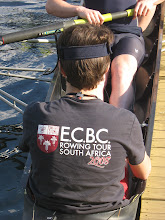In 1820 the British government, wrestling with a depression, the problem of absorbing soldiers returning from the Napoleonic wars and the Industrial Revolution, seized on the idea of settling people in the frontier districts of the Cape.
More than 4 000 British people landed on the beach in Algoa Bay and were guided inland to their allocated farms - they're known as the 1820 Settlers.
Just inland from Port Alfred is the town of Bathurst. Founded in 1820, it was named after, Lord Bathurst, then the colonial secretary. It was intended to be the administrative centre of the Settler community, but it lost its status to the more prosperous Grahamstown and is today one of the smallest municipalities in South Africa.
Strangely, it's also the site of this giant pineapple......












